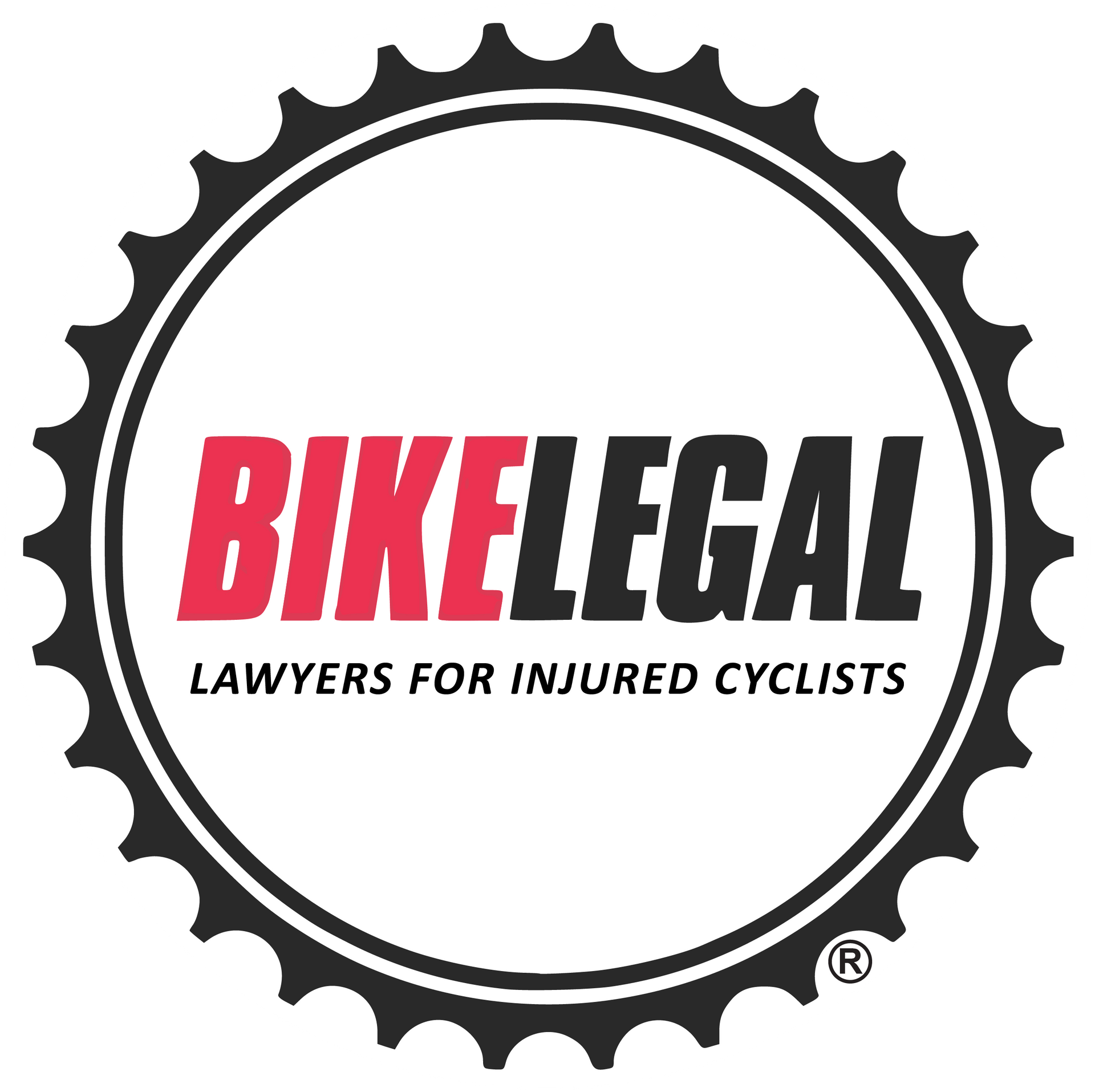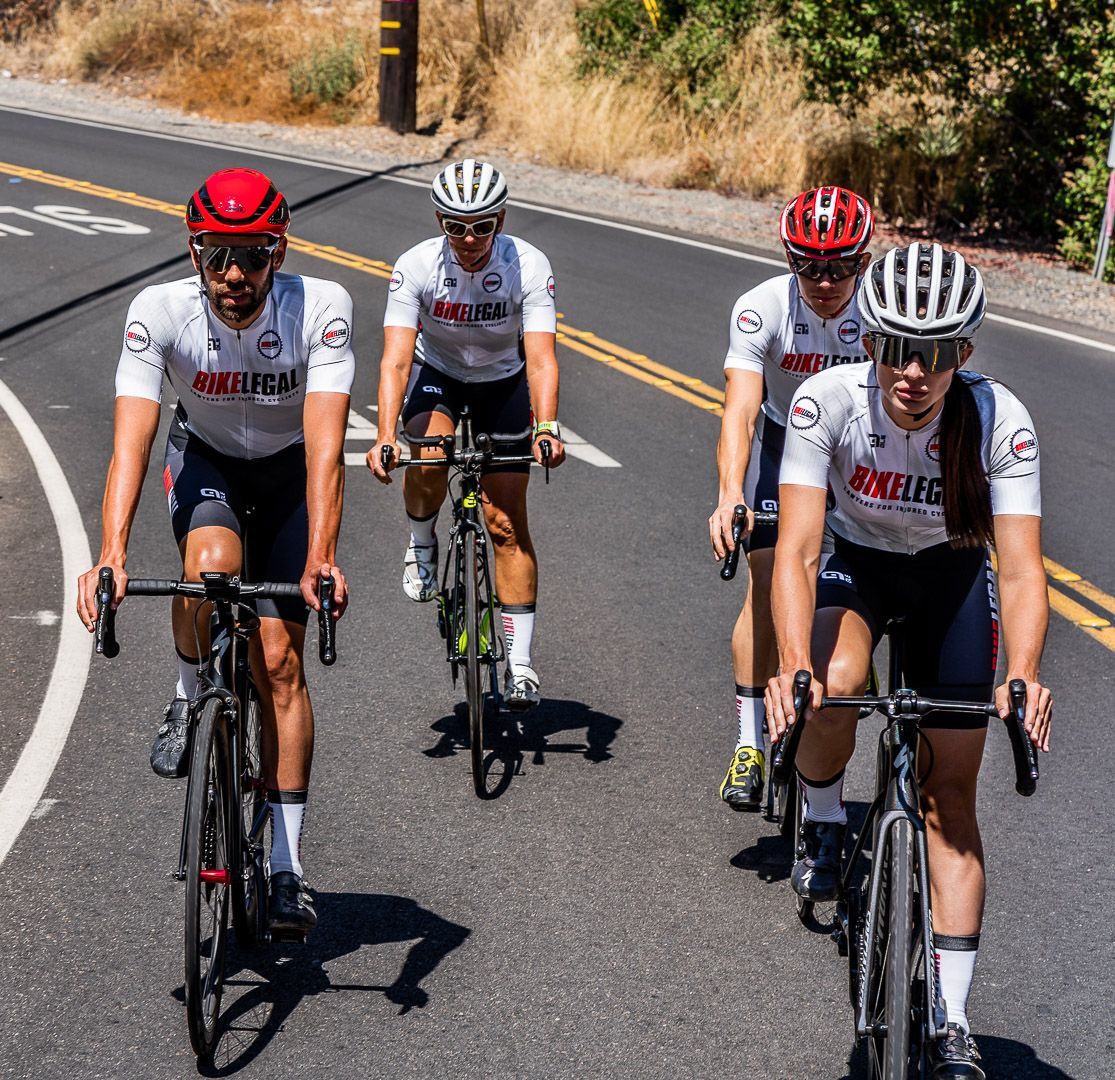20 Types of Bicycle Accidents & Prevention Tips
Follow us on
social media!
20 Types of Bicycle Accidents & Prevention Tips
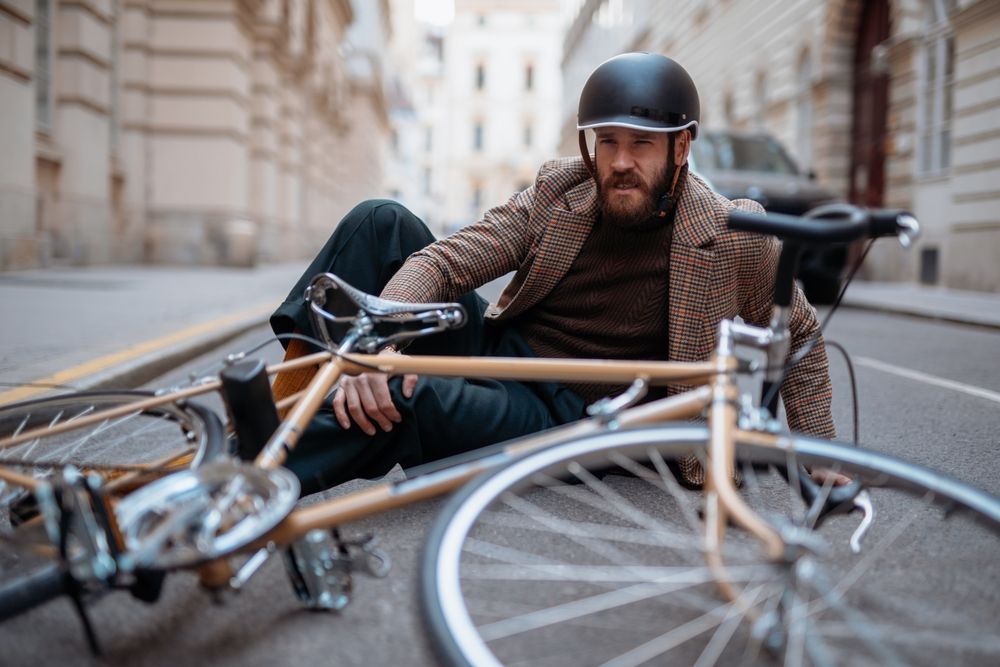
According to the Centers for Disease Control and Prevention, over 130,000 cyclists are injured annually, and nearly 1,000 tragically lose their lives in the US alone. These statistics highlight a crucial reality: cycling, despite its undeniable benefits, can be extremely dangerous.
To navigate the streets safely, understanding the most common types of bicycle accidents is crucial. This knowledge empowers cyclists to anticipate risks, make informed decisions, and, ultimately, arrive at their destinations safely without serious injury.
That said, let’s explore:
- The most common types of bicycle accidents and their causes.
- Practical prevention tips to minimize the risk of accidents.
- Insightful statistics and data shedding light on bike-related incidents.
Types of Bicycle Accidents
A bicycle accident can happen for various reasons, often involving interactions with motor vehicles, pedestrians, other cyclists, animals, or road hazards.
Here's a comprehensive list of bicycle crashes:
- Right Hook Accidents
- Left Cross Accidents
- Dooring Accidents
- Sidewalk Riding Accidents
- Car Pulling Out or In Front of a Cyclist
- Dog Attacks or Other Animals
- Accidents Due to Weather Conditions
- Collisions with Pedestrians
- Accidents Involving Other Cyclists
- Cycling Accidents Due to Poor Road Design or Maintenance
- Accidents Involving Public Transportation or Motor Vehicles
- Hit and Run Accidents
- DUI Cycling Accidents
- Accidents Due to Distracted Riding (e.g., using a phone)
- Group Riding Accidents
- Racing Accidents
- Accidents Involving Improper Signaling
- Accidents Due to Failure to Yield Right of Way
- Accidents While Cycling Against Traffic
- Accidents Due to Breaking Traffic Laws
12 Most Common Bicycle Accidents
While there are several types of bicycle accidents, there are 12 in particular that happen more often to cyclists than others. Below is a table by the National Highway Traffic Safety Administration, of the most common causes of injury to cyclists:
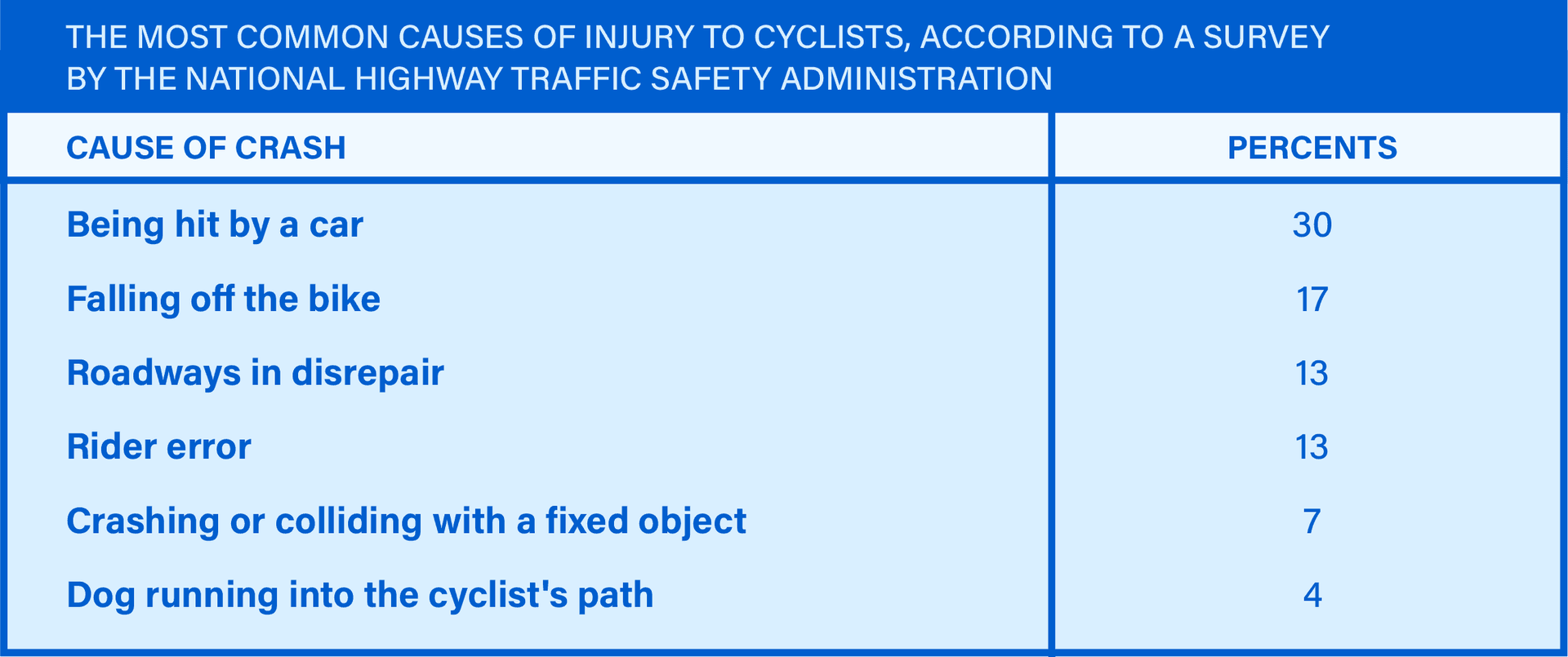
On top of these, we've compiled our own list of the most common types of bicycle accidents based on the cases we handle for cyclists at Bike Legal.
As you'll notice, most of these accidents typically occur with motor vehicles. In fact, according to a study by the U.S. Department of Transportation, 95% of cyclists killed were in single-vehicle traffic crashes in 2021, and 5% in multiple-vehicle crashes.
Read next: Cyclist vs Auto Accidents: Where do Liabilities Lie?
Here's how they typically happen:
1. Side-Swipe
This type of bicycle accident occurs when a motor vehicle passes a cyclist too closely and the side of the vehicle brushes against the cyclist. This dangerously close proximity can unbalance the cyclist or even knock them off their bike, leading to potential injuries. Side-swipes often result from drivers not adhering to the safe passing distance laws or being unaware of a cyclist’s presence.
- Prevention Tips:
- Drivers should always give cyclists the minimum legal passing distance, often 3 feet or more, depending on the state.
- Cyclists can wear bright clothing and use lights and reflectors to increase visibility.
- Cyclists should try to maintain a straight line and avoid swerving when cars are passing.
2. Right Hook Collision
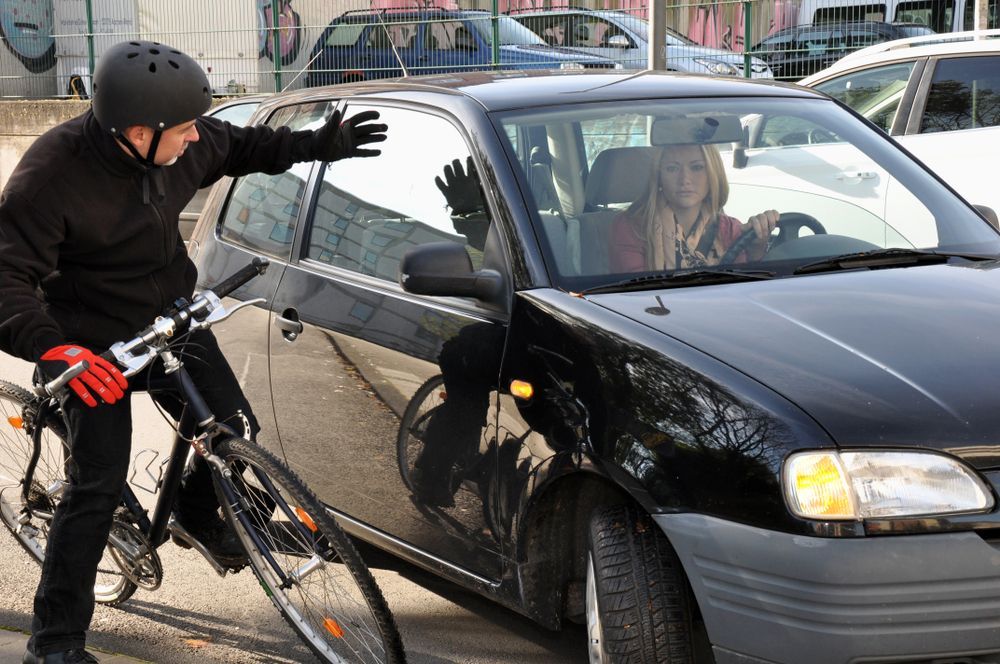
A right hook bicycle accident happens when a vehicle overtakes a cyclist and then makes a right turn directly in front of them. The cyclist, having less time to react, may crash into the side of the vehicle. This scenario typically occurs at intersections and driveways when drivers fail to check their mirrors or blind spots for cyclists before turning.
- Prevention Tips:
- Drivers need to check their mirrors and blind spots for cyclists before making right turns.
- Cyclists can increase their visibility with lights and reflective gear and should be cautious when approaching intersections.
- Both parties should anticipate each other's moves, especially near intersections.
3. Overtaking
Overtaking bicycle accidents occur when careless and negligent drivers try to pass a cyclist but misjudge the necessary space to do so safely or the timing, leading to a collision. This misjudgment can result from underestimating the cyclist's speed, overestimating the available space, or failing to see the cyclist entirely.
This is particularly a problem for large trucks, as the same U.S. Department of Transportation report found that they had the highest percentage of rear-impact cyclist fatalities.
- Prevention Tips:
- Drivers should ensure there is ample space and time to overtake a cyclist safely.
- Cyclists can use hand signals to make their intentions known and ride in a predictable manner.
- Both cyclists and drivers should remain aware of their surroundings and communicate intentions clearly.
4. Left Cross
A left cross bicycle accident takes place when a vehicle coming from the opposite direction turns left at an intersection or into a driveway, crossing the cyclist’s path and causing a collision. These incidents often happen because drivers either fail to see the cyclist or misjudge their speed, leading to serious crashes.
Buses and large trucks had the highest percentages of right-side impacts in cyclist fatalities.
- Prevention Tips:
- Drivers should look out for oncoming cyclists before making a left turn and yield accordingly.
- Cyclists can wear bright, reflective clothing and use lights to improve visibility.
- Cyclists should be prepared to brake or maneuver safely when approaching intersections.
5. Drive-Out
Drive-out collisions occur when a vehicle pulls out from a driveway, parking lot, or side street right into the path of an oncoming cyclist. These accidents are often the result of drivers not performing adequate checks for cyclists before entering the roadway.
- Prevention Tips:
- Drivers must always check for cyclists before pulling out onto a roadway.
- Cyclists can help by being especially vigilant when passing driveways or side streets.
- Using lights and wearing visible clothing can help cyclists catch the attention of drivers.
6. Rear-End Collision
This type of bicycle accident involves a vehicle colliding with a cyclist from behind. In fact, in the same findings by the U.S. Department of Transportation above, cyclists who died in single-vehicle crashes were most likely to be struck by the front of the vehicles.
This can occur due to the driver’s inattention, distraction, or misjudgment of the cyclist’s speed and distance. Rear-end collisions can be particularly dangerous for cyclists, as they have little to no protection from the impact.
- Prevention Tips:
- Drivers should maintain a safe distance behind cyclists and adjust their speed accordingly.
- Cyclists can use rear lights and reflective gear to increase visibility, especially in low light conditions.
- Cyclists may consider investing in rear radar detection devices such as the Garmin Varia. This device tracks approaching rear traffic and alerts the cyclist via their Garmin computer.
- Both drivers and cyclists should avoid distractions and focus on the road.
7. Intersection
Intersection-related bicycle accidents involve crashes at both controlled (with traffic signals or signs) and uncontrolled intersections. They often result from either party failing to yield the right of way, or one party running a red light or stop sign. These accidents can be severe due to the crossing paths and potentially high speeds.
- Prevention Tips:
- Both cyclists and drivers should obey all traffic signals and signs.
- Cyclists should make eye contact with drivers when possible to ensure they are seen.
- Hand signals from cyclists can help communicate intentions at intersections.
8. Hit and Run
Hit and run incidents are distressingly common and involve a driver colliding with a cyclist and then leaving the scene without offering aid, information, or waiting for law enforcement. These accidents add a layer of difficulty to the cyclist's recovery, both physically and in seeking justice.
- Prevention Tips:
- Witnesses and victims should try to note any details of the fleeing vehicle and report them to authorities.
- Cyclists should ride with a camera or use a bike-mounted camera to capture evidence in case of an accident.
- Community awareness and education can help reduce the occurrence of these incidents.
Read more: "Hit-and-Run" Bicycle Accidents & How to Pursue Legal Action
9. Dooring
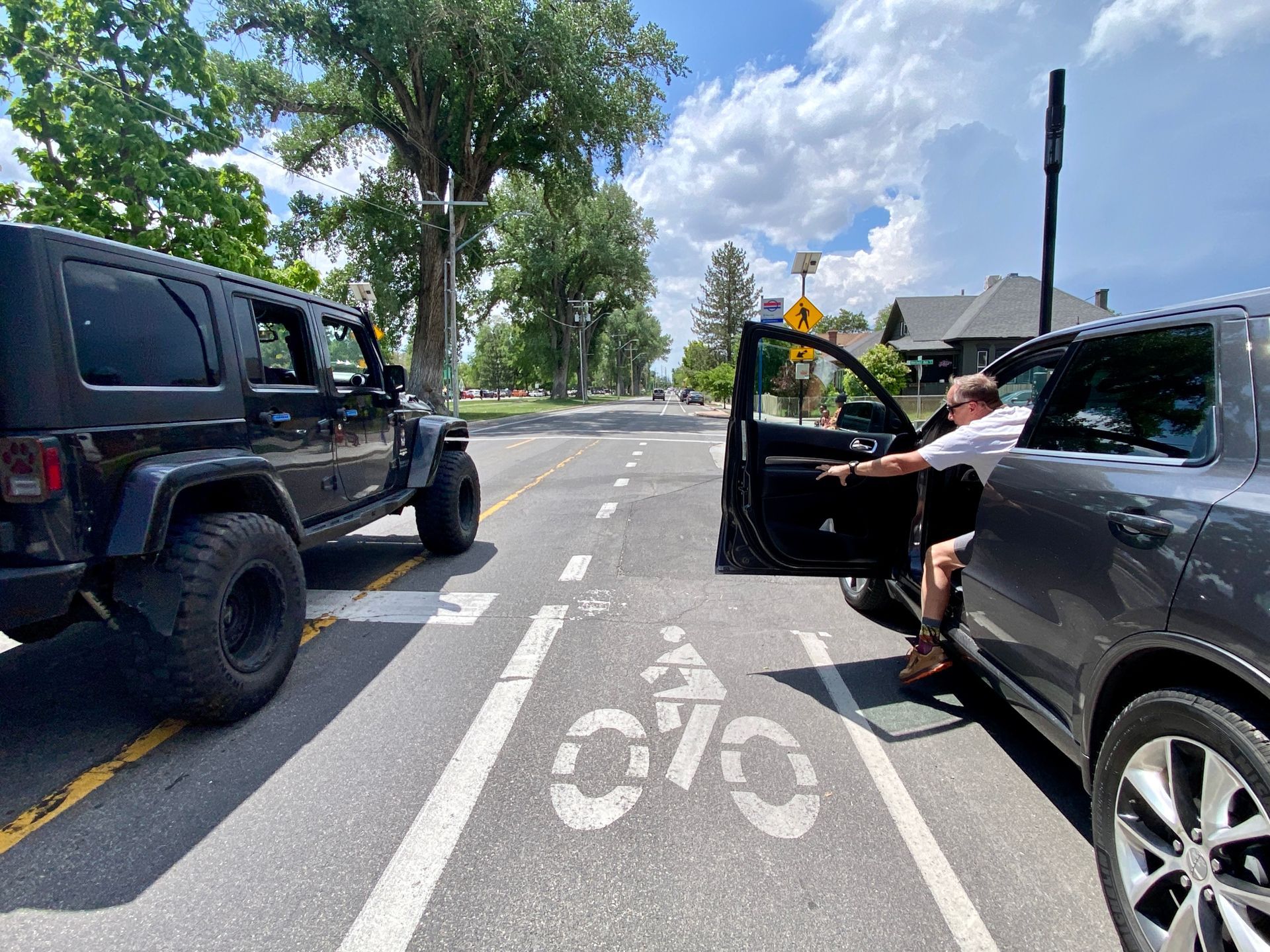
Dooring bike accidents occur when a vehicle’s occupant opens their door without checking for approaching cyclists, causing the cyclist to crash into the door. These accidents can lead to severe injuries for cyclists, who have little time to react and avoid the suddenly opened door.
- Prevention Tips:
- Vehicle occupants should always perform the "Dutch Reach" by opening car doors with their far hand, forcing them to look over their shoulder for approaching cyclists.
- Cyclists should ride far enough from parked cars to avoid opened doors when possible.
- Awareness campaigns can educate both drivers and cyclists about the risks of dooring.
Read more: Car Door Bike Accidents: What To Do and Is It Your Fault?
10. Poor Road Conditions
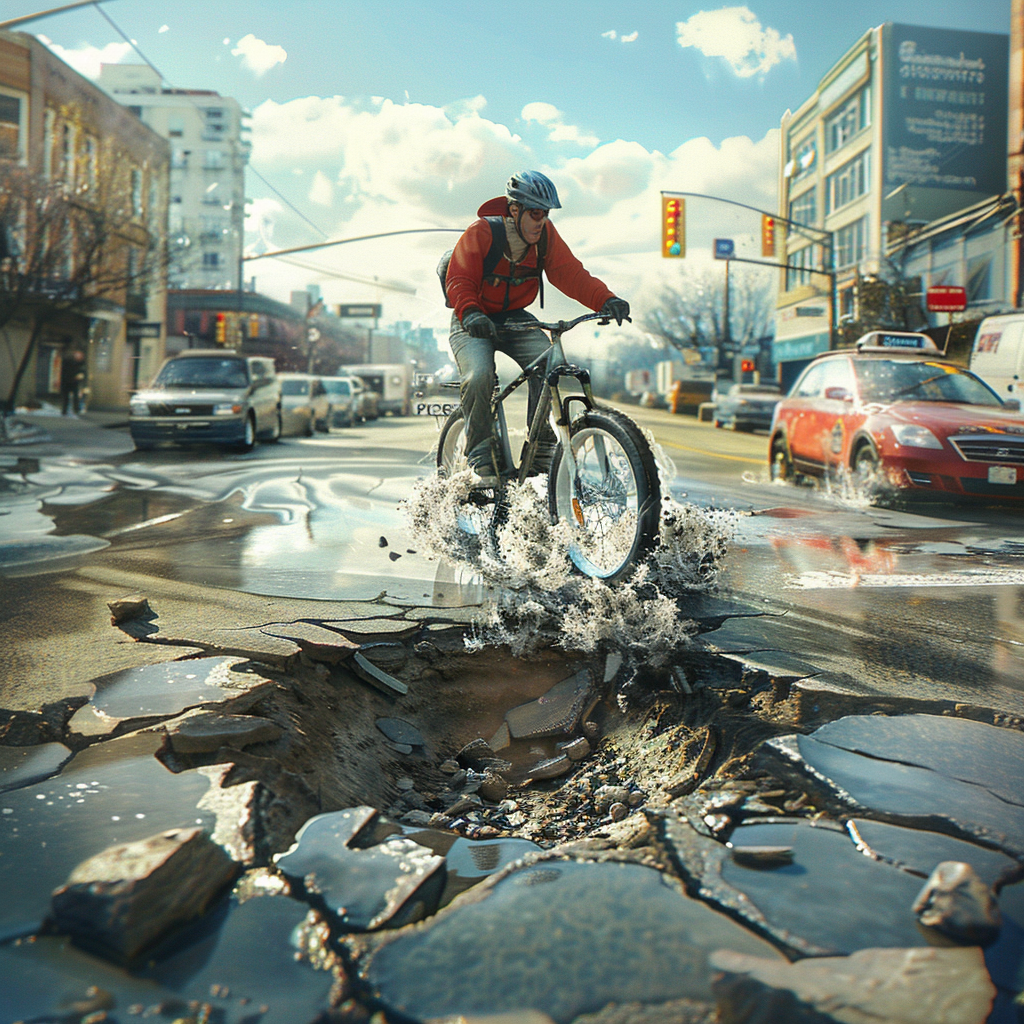
Crashes caused by poor road conditions, such as potholes, cracks, uneven surfaces, or debris, can lead to cyclists losing control and crashing. These accidents underscore the importance of regular road maintenance and the need for cyclists to be vigilant about road hazards.
- Prevention Tips:
- Cyclists should report hazardous road conditions to local authorities for repair.
- Riding at a safe speed and using bikes equipped with suspension or wider tires can help navigate poor road surfaces.
- Cyclists should practice scanning the road ahead for hazards and adjust their path accordingly.
11. Dog Chase

Dog chase incidents happen when a dog chases after a cyclist, potentially biting at their feet or bicycle, causing the cyclist to lose control and crash. These accidents can be unpredictable and depend on the behavior of the animal involved.
- Prevention Tips:
- Cyclists should try to avoid areas known for loose dogs when possible.
- Carrying a water bottle to squirt at pursuing dogs can sometimes deter them.
- Cyclists should avoid kicking at dogs or escalating the situation, as this can provoke further aggression.
12. Group Riding
Bike accidents during group rides occur when cyclists ride closely together and may overlap wheels, stop or swerve suddenly, or fail to communicate intentions clearly, leading to collisions within the group. These accidents highlight the importance of clear communication and maintaining safe distances when riding in groups.
- Prevention Tips:
- Use verbal cues and hand signals to communicate within the group.
- Maintain a consistent pace and avoid sudden stops or direction changes without warning.
- Practice good group riding etiquette, such as riding two abreast where it is safe to do so and single file in traffic.
Bicycle Fatality Impact Chart
If you're curious about the type of vehicles and which part of the vehicles cyclists were most struck and killed by, check out the bicycle accident table below on numbers and percentages.
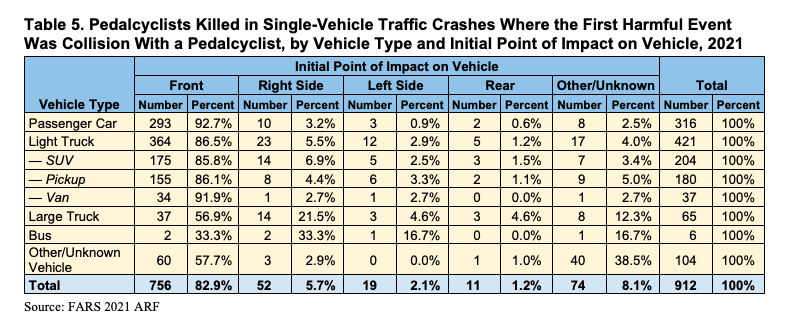
Hurt in a Bicycle Accident? Bike Legal Firm is By Your Side.
Understanding the most common types of bicycle crashes is crucial for cyclists, motorists, and pedestrians alike to foster a safer shared environment. Remember, the road is a shared space, and it is up to each one of us to make it safer for all.
Sometimes, even the most cautious rider can encounter serious injuries in a bicycle accident. If you or someone you know has been involved in a bicycle accident, don’t wait to seek help. Consult with and experienced bicycle accident attorney. The Bike Legal team is always available to discuss legal options and if a bicycle accident lawsuit is the right direction for you. Contact Bike Legal Firm today!
Request a free consultation by calling 877-BIKE LEGAL (877 245-3534) or submitting a form.
